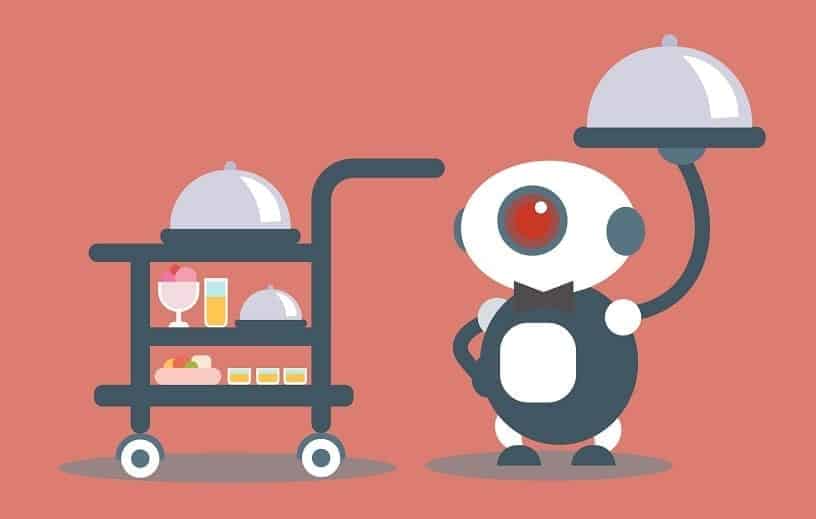Restaurant Automation – Look Beyond Robots
Does the term “restaurant automation” spark joy in you? Or does it fill you with dread, knowing that an entire re-tooling of your fundamental operations is looming? In this article, we take a look beyond front-of-house robotics in the restaurant industry, and dive into the game-changing dynamic of automation.
The Buzz on Restaurant Automation
Automation in food service has lately been hyper-focused on the use of physical and mechanical robotics. Front-of-house robots attract the wow-factor, and they’re becoming a vital asset in back-of-house as well.
While the buzz around robot wait staff and cooks may always be newsworthy to the consumer, to the industry professionals, the scope of restaurant automation services goes far beyond that. As more restaurant operators understand the practical implications of automation, wider adoption is taking place that includes Robotic Process Automation (RPA), mobility, machine learning and intelligent automation.

Embracing restaurant automation doesn’t require you to deploy a workforce that abides by the Three Laws of Robotics.
Take the case of RPA for example. While not based on a physical or mechanical robot, RPA takes over high-volume, rule-based and trigger-driven work. Think of it as software bots, ready to free up humans in operations, HR, finance, customer service and IT. While many restaurant groups are quietly implementing RPA, its massive surge in popularity across all industries will force restaurants to think differently about what robotic automation can encompass.
Many forms of automation exist to provide intelligent insights to guide the human workforce towards an optimal action. There are so many sources of data that can be forged to create intelligent automation that improves labor management, inventory management, food quality, food waste, sustainability and customer experience. In many cases, you can address multiple pain points with one grand plan!
Kitchen Intelligence for Food Preparation Automation
A significant area for growth where automation can shine is with kitchen management, specifically in the cooking process. Data-driven cooking is a cost control method that looks at historical purchasing data. It factors in sales patterns of individual stores down to the hour, holidays, weather and more.
That information is never stored in one place, so the intelligent component is the algorithm behind collection of POS, ERP and other systems of record to inform cook staff. The cooking process is now entirely guided by the data, and not tribal knowledge or guesswork. Kitchen intelligence should focus on the necessities of delivering what is promised to the customer – food that is consistent, fresh and prompt.
Important questions to ask when exploring kitchen intelligence solutions may include:
One Final Thought – Off-Premise Ordering
Off-premise ordering has gifted many restaurants with new revenue streams. It has also demanded operators to turn their innovative attention to optimizing the experience.
When implementing multiple ordering methods, the kitchen can be compromised. While we wait for technology to intelligently predict which orders need to be prepared first based on guest proximity, take into account what the back-of-house is already contending with. The volume of on-premise guests is a critical visual cue that typically educates staff on how much to cook. Weather is another factor, but off-premise and 3rd party delivery can skew that assumption.
KitchIntel – The Path to a Smart Kitchen
Getting your ducks in a row (or chicken/beef/vegetable patty!) with data-driven cooking methods can prepare the restaurant to anticipate orders successfully no matter the means. KitchIntel is the answer to this preparation. Impacting significant business critical areas, such as labor and talent, food waste and consistency, KitchIntel automates strenuous back-of-house kitchen duties while reducing operational costs.
While taking this step may seem more like a leap, keep in mind that small steps in this process will serve you well. The path to automating your kitchen doesn’t have to be revolutionary, just evolutionary enough to reap the benefits! Our team created KitchIntel with this in mind, to provide back-of-house employees and management with the automation necessary to relieve operational strain.
The Full Scope of KitchIntel
Explore real case studies, insights, and demos on request at smartbridge.com/kitchintel.
Keep Reading: Digital Transformation for the Restaurant Industry
There’s more to explore at Smartbridge.com!
Sign up to be notified when we publish articles, news, videos and more!
Other ways to
follow us:


